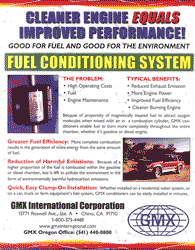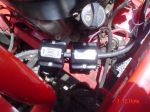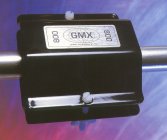 FUEL FUEL
How does magnetism affect Hydrocarbon-based combustible fluids such as gasoline, diesel fuel, kerosene, LP and natural gas?
To promote complete combustion, Oxygen must be combined with the Hydrocarbon molecule. Because the net charges of the Hydrocarbon and Oxygen molecules are both negative, there are repulsive forces, not attractive forces present. To overcome this repulsion, combustion engineers design combustion processes so that the combustion envelope is super-saturated with Oxygen. The overwhelming Oxygen concentration forces the two similarly charged molecules to be in close physical proximity to each other any eventually, combine to create the combustion climate. In essence the fuel uses the available Oxygen.
Since Fuel, like most fluids, can be ionized by an external magnetic force, it will exhibit many of the same physical-atomic characteristics of the form information on water.
When MAGNETIZED, the fuel’s Hydrocarbons are ionized to exhibit a net positive charge (as with water). The change in charge allows the fuel to aggressively attract and bond with available (negatively charged Oxygen. This creates a more comprehensive Hydrocarbon molecule with its own Oxygen supply. The end result is a more efficient and fully burning, explosive mixture which now has its own oxygen base.
Magnetizing the fuel also polarized the mixture by replacing the normally chaotic fluid with an even, positively charged uniformly aligned fuel, which, with the oxygen bonding, results in an almost total burn for complete BTU output (no hot spotting) and better fuel efficiency. The magnetized fuel also attracts and removes previous carbon and varnish build-up (similar to the scale removal action in an aqueous environment) in the jets, injectors and engine for even higher efficiency. Cleaning to Factory – New Specs, thereby running a cleaner, more efficient engine, which of course lasts longer with improved performance.
What Can a Magnet Technology Do for Diesel Powered Vehicles?
 In addition to increasing fuel efficiently, when properly magnetized, diesel fuel will resist gelling. (Gelling is a temperature induced “crystallization” that can be considered somewhat analogous to the scaling mechanism in an aqueous solution). This means that during cold weather, special fuel additives may be eliminated. Also, for the same oxygen bonding and cleaning reasons as outlined above, immediately apparent is the increase in available power and the marked reduction in the exhaust smoking normally associated with diesel power. In addition to increasing fuel efficiently, when properly magnetized, diesel fuel will resist gelling. (Gelling is a temperature induced “crystallization” that can be considered somewhat analogous to the scaling mechanism in an aqueous solution). This means that during cold weather, special fuel additives may be eliminated. Also, for the same oxygen bonding and cleaning reasons as outlined above, immediately apparent is the increase in available power and the marked reduction in the exhaust smoking normally associated with diesel power.
After Installation, what type of behavior can be expected from a newly MAGNETIZED car?
 Immediately evident will be an increase in the power/mpg. This is the newly energized fuel exploding in the combustion chambers. Depending upon the carbon & varnish condition of the system, the extra mpg may be reduced temporarily. This is a result of the MAGNETIZED fuel’s cleaning capability, dissolving the carbon and the varnish build-up from within the system. It occurs when tiny particulates may briefly impede the fuel flow. The particulate will dissolve. The power will then return, signifying the completion of the “cleaning” stage. At this point, the jets, lines, and injectors return to peak efficiency. Immediately evident will be an increase in the power/mpg. This is the newly energized fuel exploding in the combustion chambers. Depending upon the carbon & varnish condition of the system, the extra mpg may be reduced temporarily. This is a result of the MAGNETIZED fuel’s cleaning capability, dissolving the carbon and the varnish build-up from within the system. It occurs when tiny particulates may briefly impede the fuel flow. The particulate will dissolve. The power will then return, signifying the completion of the “cleaning” stage. At this point, the jets, lines, and injectors return to peak efficiency.
==> Read testimonial from Myles Kuperus, Kuperus Trucking letter reporting on fuel improvement thanks to magnetic fluid conditioning.
|

